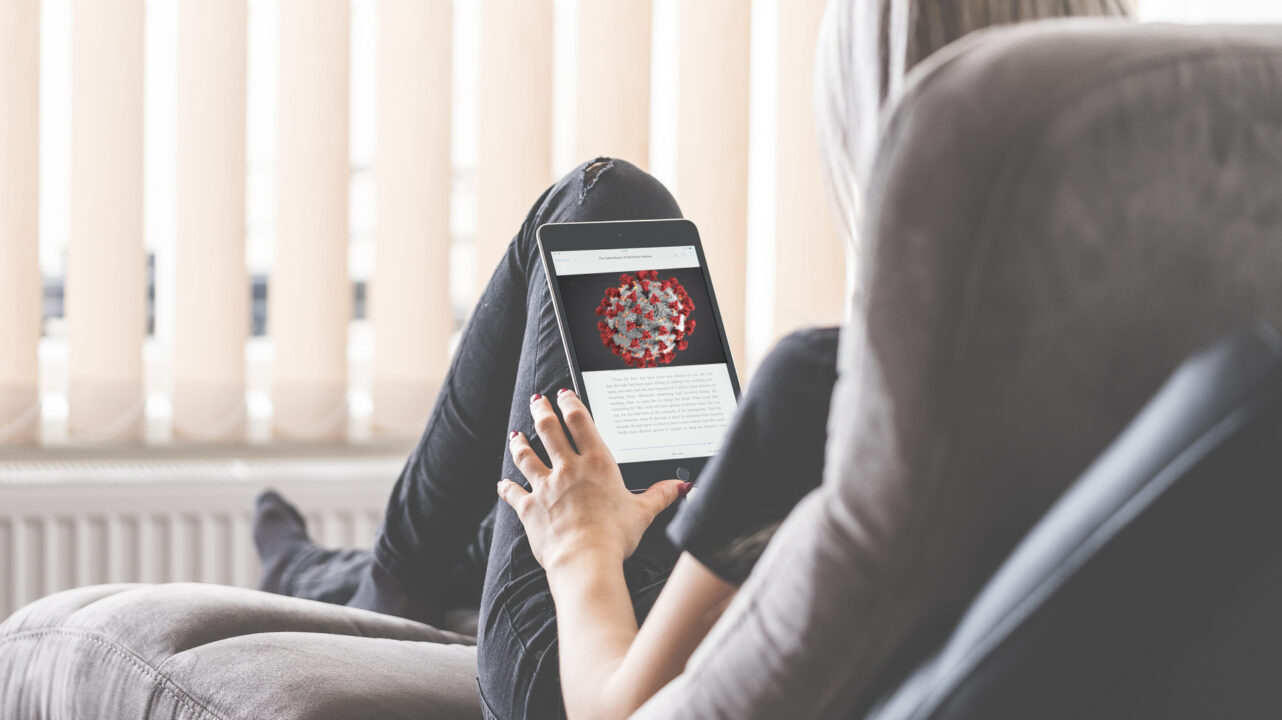Swedes’ confidence in government officials varies greatly depending on their political leanings. Politicians are perceived as more in agreement when it comes to their views on how the corona pandemic is being handled in Sweden. These are some of the latest findings of a study being conducted by the non-profit organisation VA (Public & Science) to investigate communication about the coronavirus in Sweden.
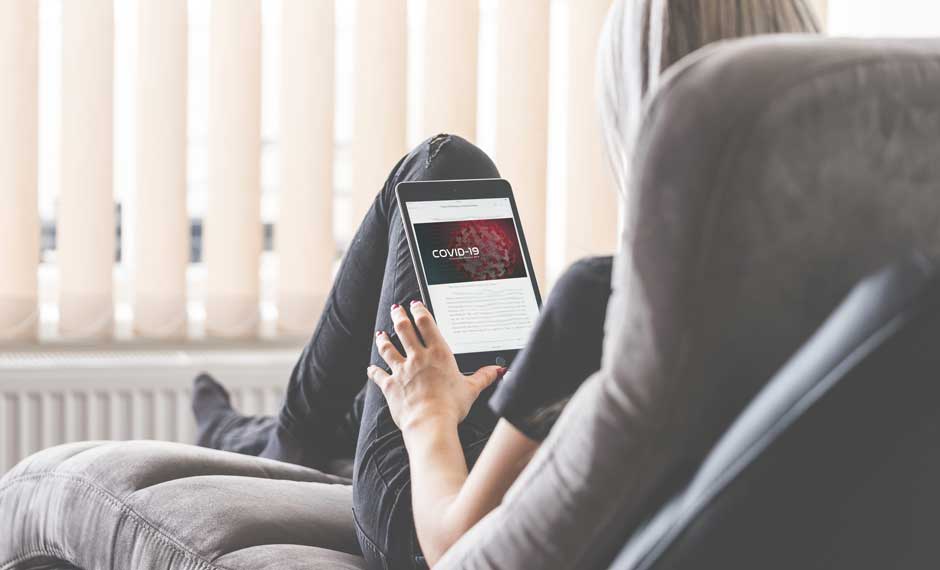
In collaboration with researchers from the Karolinska Institute and Södertörn University, VA (Public & Science) is conducting a study of how people are receiving and interpreting information about the coronavirus and the ongoing pandemic. Here are the findings from the 16th wave of the survey, carried out between 17–22 April 2021.
Among professional groups that comment on the coronavirus in the media, Swedes still have the greatest confidence in doctors and other healthcare professionals. Nine out of ten Swedes (90 percent) have fairly or very high confidence in this group. This is followed by researchers (84 percent), government officials (58 percent), politicians (23 percent) and journalists (21 percent). No significant changes can be seen since March.
When it comes to politicians and journalists, a larger proportion of Swedes say they have fairly or very low confidence in them, compared to those who have high confidence. Four out of ten (40 percent) have low confidence in politicians and the corresponding proportion for journalists is 37 percent. Men lack confidence in these groups to a greater extent than women, and supporters of the Sweden Democrats have the lowest confidence of all. Among these, 57 percent have fairly or very low confidence in journalists and 75 percent have low confidence in politicians.
Confidence in government officials varies markedly between people that support different political parties. Among those who support the Social Democrats, 82 percent have high confidence and four percent low confidence in government officials. Among supporters of the Sweden Democrats, only 18 percent have high confidence while 51 percent have low confidence.
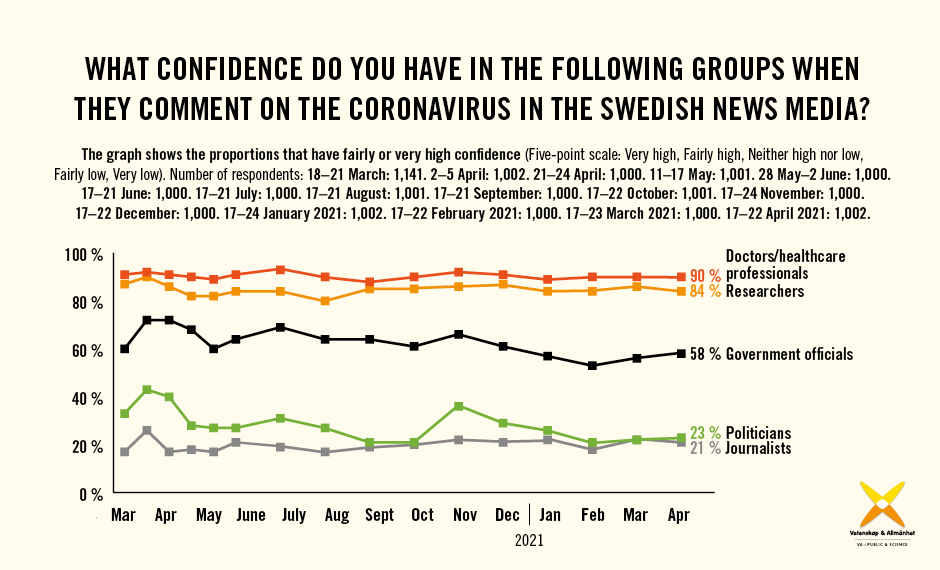
Politicians are perceived to be more in agreement when it comes to how the pandemic is being handled in Sweden compared to in March. In April, one in three Swedes (34 percent) perceived politicians as fairly or very in agreement, which is an increase of six percentage points over the past month. However, it is still significantly lower than in November 2020, when the perception of agreement among politicians began to fall significantly. Perceived agreement among politicians is lowest among supporters of the Sweden Democrats, where the corresponding proportion is 23 percent.
However, compared with other professional groups, it is politicians that are still perceived to be the least in agreement. Greatest agreement is perceived among doctors and other healthcare professionals (86 percent of Swedes perceive these as fairly or very in agreement). This is followed by government officials (68 percent), researchers (67 percent) and journalists (41 percent).
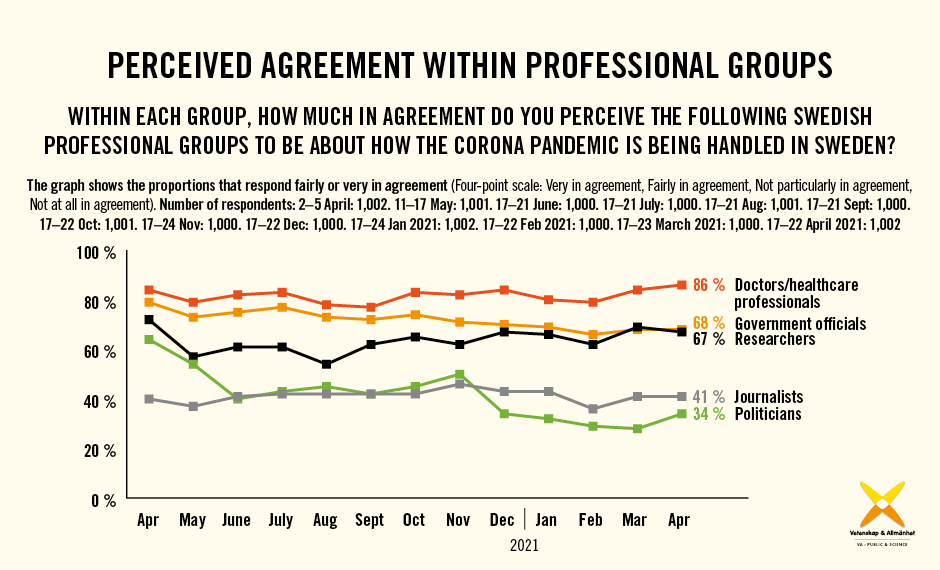
Around half of Swedes (49 percent) perceive the tone of corona news reporting to be fairly or very hyped/alarmist, which does not differ significantly from in March. On the other hand, one in ten (10 percent) perceive the reporting as fairly or very cautious/watchful, while 37 percent perceive it as neither hyped nor cautious. People who are aged 65 years or older perceive the reporting as hyped/alarmist to a slightly greater extent than younger people.
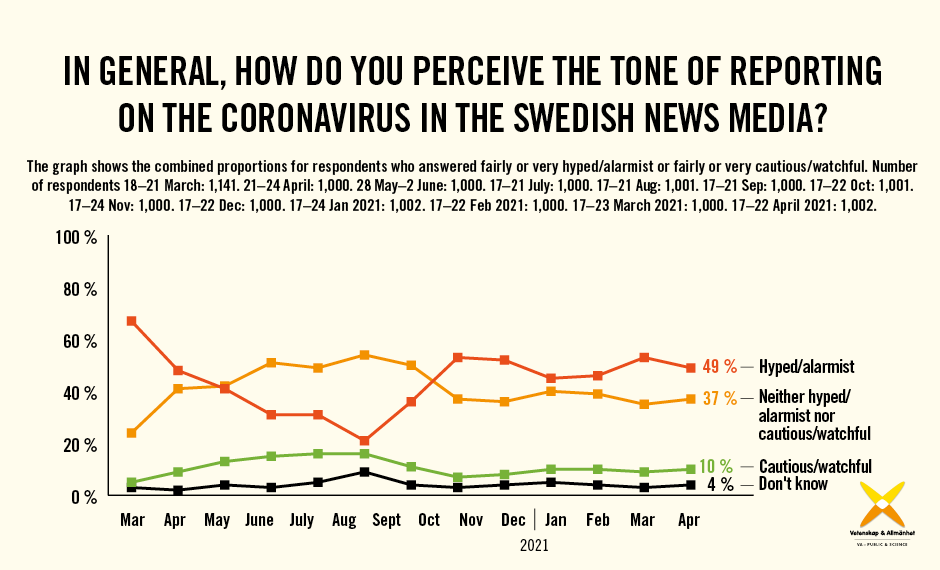
Swedish Television (SVT) is still the news channel through which most Swedes access information about the coronavirus. In April, nearly two out of three (62 percent) got information about corona through SVT, with the corresponding proportion among people aged 65 or older being 83 percent. This is followed by TV4 (37 percent), Swedish Radio (37 percent), the tabloid Aftonbladet (35 percent) and local morning newspapers (34 percent).
Swedes with a university education consume news to a greater extent than others from Dagens Nyheter, Svenska Dagbladet and foreign/international media. Instead, those who do not have a higher education are more likely to get information about the coronavirus through local morning newspapers, Aftonbladet and TV4.
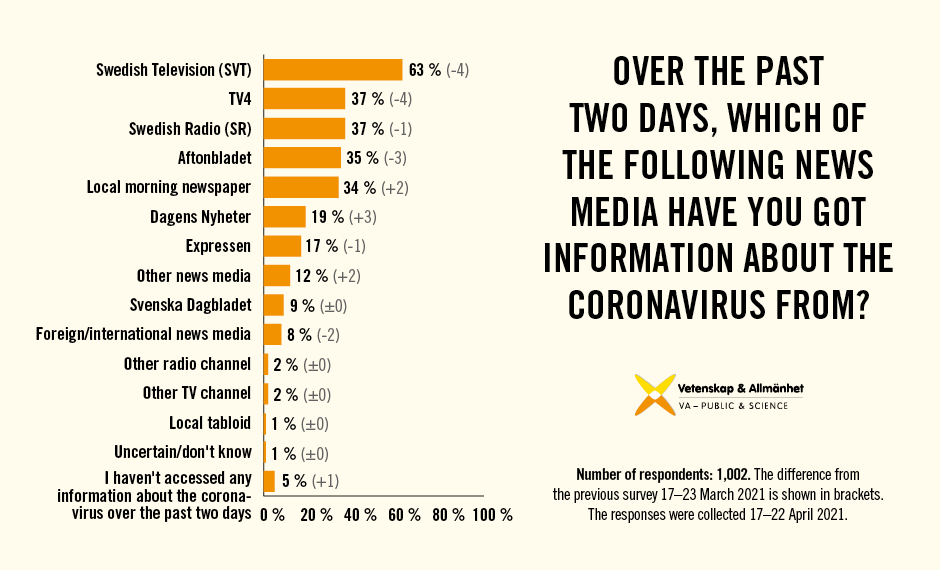
Confidence in various media’s reporting on the coronavirus has not changed since March. Swedish Television enjoys the greatest confidence (76 percent have fairly or very high confidence) together with Swedish Radio (74 percent). This is followed by TV4 (53 percent), Dagens Nyheter (48 percent), local morning newspapers (43 percent), Svenska Dagbladet (42 percent), foreign/international media (23 percent), Aftonbladet (19 percent) and Expressen (14 percent).
Men, to a greater extent than women, have fairly or very low confidence in all news channels apart from foreign/international media where no difference between the sexes is visible. The same pattern can be seen among supporters of the Sweden Democrats, who, to a greater extent than others, have low confidence in all media channels apart from Expressen and foreign/international media.
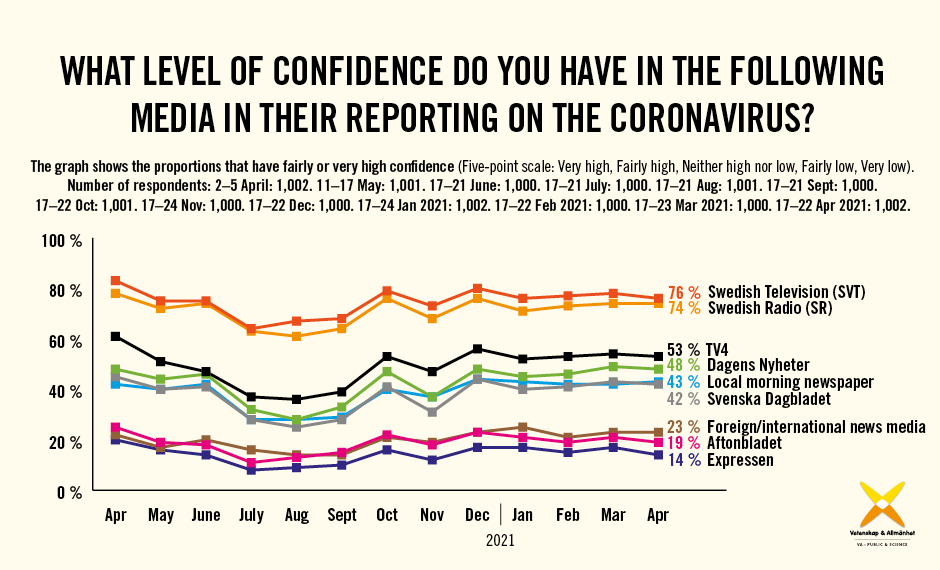
About the survey
The survey was conducted by Kantar Sifo and consisted of 1,002 interviews with a web panel based on random sampling. The interviews were conducted 17–22 April 2021. The results are weighted based on gender, age and region of residence.
In order to monitor the Swedish public’s news consumption, confidence in key professional groups and attitudes towards media reporting over time, we are conducting a number of studies during the course of the pandemic. We also plan to undertake a content analysis of reporting on the coronavirus in the Swedish media in order to map any changes in reporting during different phases, and how this relates to public attitudes during the same time period.
The study is being conducted with the support of, Södertörn University, the Swedish Research Council and the Wenner-Gren Foundations.
Read more about VA’s study and the results of the first, second, third, fourth, fifth, sixth, seventh, eighth, ninth, tenth, eleventh, twelfth, thirteenth, fourteenth and fifteenth waves of the study.

